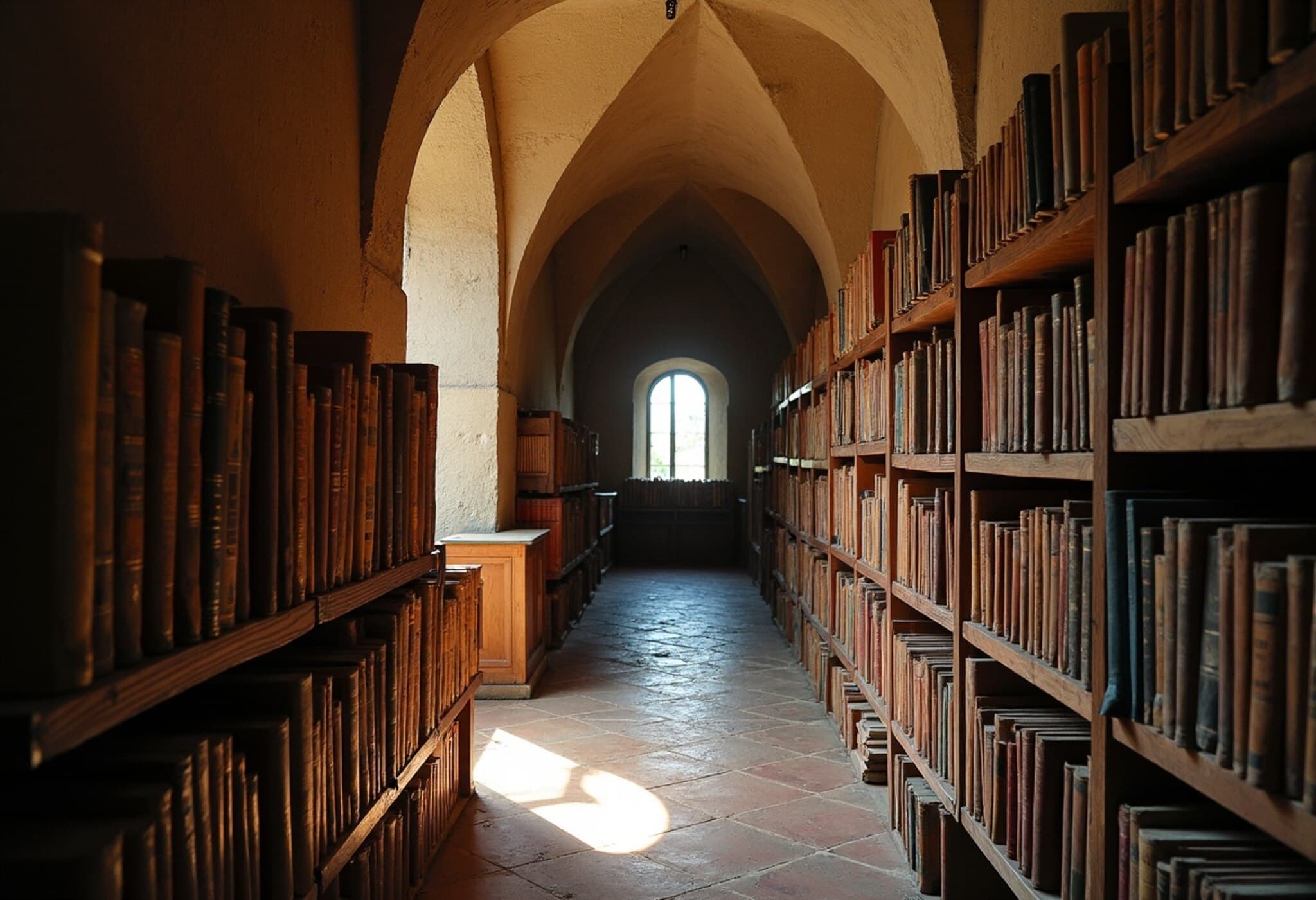Preserving a Thousand Years of History: The Pannonhalma Archabbey Library’s Fight Against Beetles
Nestled atop a hill in northwest Hungary, the ancient Pannonhalma Archabbey has been a beacon of learning since its founding in 996. Today, this UNESCO World Heritage site faces a modern challenge: safeguarding its invaluable collection of nearly 400,000 books from a destructive beetle infestation that threatens to erase centuries of Hungarian heritage.
The Silent Threat Within the Stacks
During routine cleaning, library staff noticed tiny holes gouged into the spines of numerous books and an unsettling accumulation of dust—clear signs of drugstore beetles feasting on the paper and glue binding these historic volumes. Zsófia Edit Hajdu, the chief restorer, described the infestation as "advanced," affecting multiple parts of the library’s vast collection, requiring a comprehensive preservation strategy.
These tiny pests, often overlooked in discussions about cultural conservation, pose a disproportionate risk to historic archives worldwide. Their ability to consume cellulose-based materials silently can lead to irreversible damage.
Guardians of Heritage Amidst Fragility
Library director Ilona Ásványi conveys a palpable sense of duty in preserving this trove of early Hungarian literature. “We are custodians of the first book catalogue in Hungary,” she says, underscoring the abbey’s role as a living link to the nation’s literary roots.
The collection boasts:
- 19 medieval codices, including a fully preserved 13th-century Bible
- Hundreds of handwritten manuscripts predating the printing press
- Printed books from the 1500s onwards
Although the rarest and most fragile works remain protected and unaffected by the infestation, the damage inflicted on other volumes elicits a profound sense of cultural loss for Ásványi, who remarks, "Even if a book is replaceable, every chewed page represents a piece of our shared history slipping away.”
Innovative Conservation Techniques: The Oxygen-Free Treatment
To combat the infestation, conservators have deployed a sophisticated method involving hermetically sealed plastic bags filled with nitrogen to displace oxygen. Books undergo a six-week oxygen-free treatment designed to starve the beetles and halt their life cycle.
Once treated, each volume undergoes meticulous inspection and cleaning. Those suffering notable structural damage are earmarked for specialized restoration work, ensuring the longevity of the collection for future generations.
Climate Change: An Unseen Catalyst
Experts at the abbey suspect that shifting climate patterns may have exacerbated the pest problem. Rising temperatures in Hungary foster environments where drugstore beetles can thrive and reproduce more frequently than before, signaling an emerging challenge not only for the Pannonhalma Archabbey but cultural institutions globally.
As Hajdu notes, “Higher temperatures favor the proliferation of insects. While mould was our primary concern in the past, we expect insect infestations to become increasingly common as global warming continues.”
A Legacy of Care Rooted in Tradition
The archabbey’s stewardship is deeply informed by the Rule of Saint Benedict, emphasizing reverence and meticulous care for all property as sacred. Ásványi reflects, “The Rule teaches that monastery property should be treated with the same respect as a sacred vessel on the altar—that is the level of vigilance we apply to our collection.”
After extensive conservation efforts, the library anticipates reopening to the public early next year, resuming its role as a vibrant cultural and educational hub.
Broader Implications for Cultural Preservation
Hungary’s experience highlights wider challenges faced by historic repositories in an era of climate uncertainty. As warmer temperatures alter ecosystems, institutions must rethink pest management, archival conditions, and conservation priorities.
Experts in cultural heritage conservation increasingly call for integrated approaches that combine traditional preservation with climate-resilient strategies. The Pannonhalma Archabbey exemplifies this intersection of ancient wisdom and modern science, offering a compelling model for libraries worldwide confronting similar threats.
Editor’s Note:
The fight against the drugstore beetle infestation at Hungary's Pannonhalma Archabbey is far more than a localized pest control issue—it is a poignant reminder of the fragility of cultural heritage amid evolving environmental pressures. This story invites us to ponder how climate change silently reshapes our stewardship of history, urging policymakers, scholars, and communities to invest thoughtfully in preserving the past. How might global collaboration better safeguard such irreplaceable legacies as climate dynamics continue to impose unforeseen risks?












